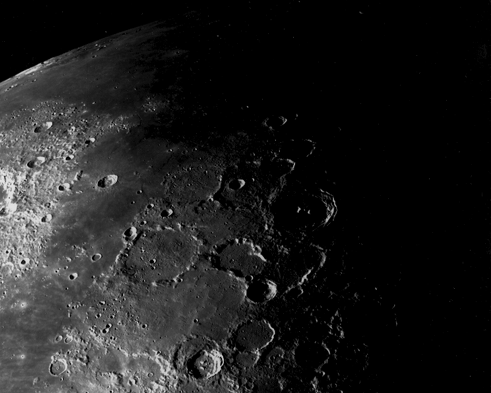Astronomy Picture of the Day
Discover the cosmos!
Each day a different image or photograph of our fascinating universe is
featured, along with a brief explanation written by a professional
astronomer.
July 31, 1996

A Violet Moon
Credit:
Galileo Project,
JPL,
NASA
Explanation:
Checking out the Galileo
spacecraft's cameras during its December 1992 flyby
of Earth's Moon, controllers took
this dramatically illuminated picture
through a violet filter.
The view looks down on the Moon's north polar
region with
the Sun shining from the left at a low angle and
the direction toward the moon's North pole toward the lower right.
Across the image upper left stretches
the smooth volcanic plain
of the Mare Imbrium.
Pythagoras crater, 65 miles wide, is near the
center of the image -- mostly in shadow, its central peak just
catches the sunlight.
Yesterday, the Moon made its closest approach to Earth and was
full for the second time in July
(as reckoned by UT dates). The closest
point in the Moon's orbit is referred to as Lunar Perigee, a mere
221,797 miles at 8 hours UT. The second full moon in a month is known as
a "Blue Moon".
Tomorrow's picture: The Hydra Cluster of Galaxies
| Archive
| Index
| Search
| Glossary
| Education
| About APOD |




Authors & editors:
Robert Nemiroff
(MTU) &
Jerry
Bonnell (USRA).
NASA Technical Rep.:
Sherri
Calvo.
Specific rights apply.
A service of:
LHEA
at
NASA/
GSFC




